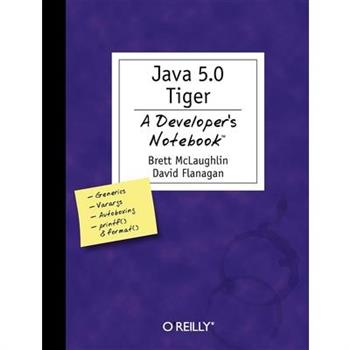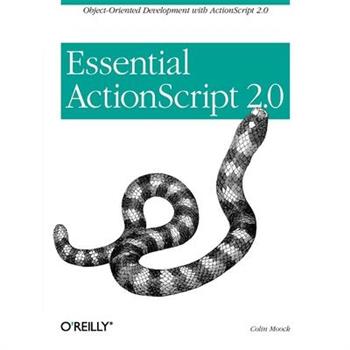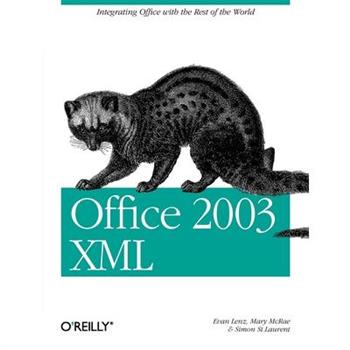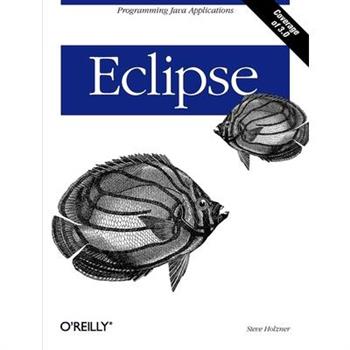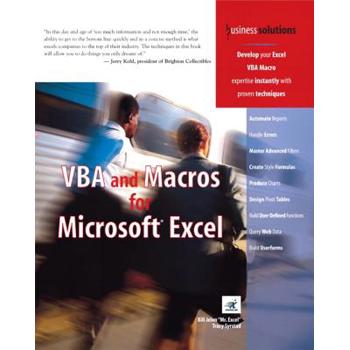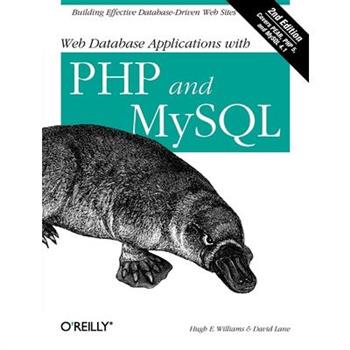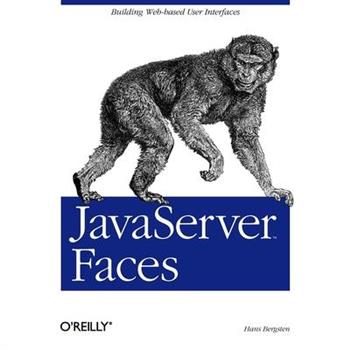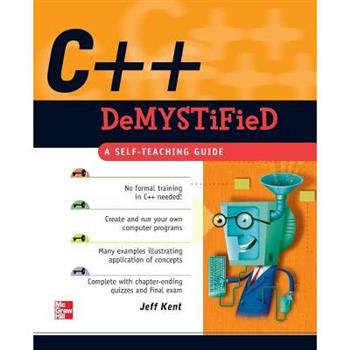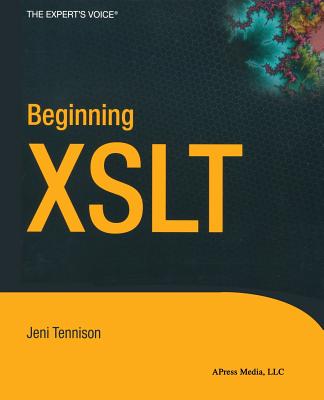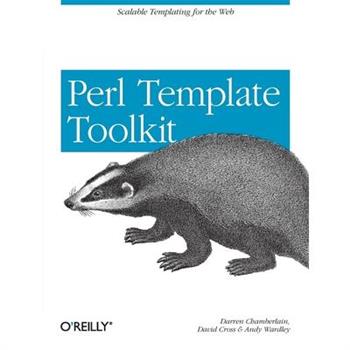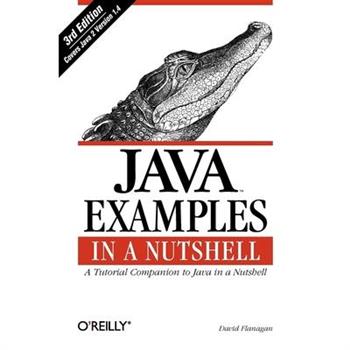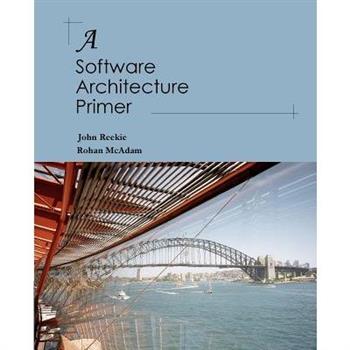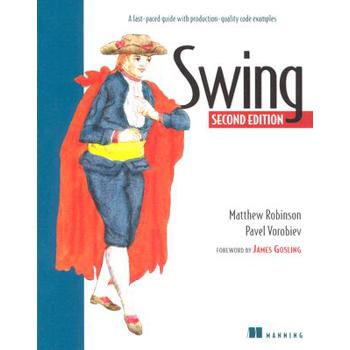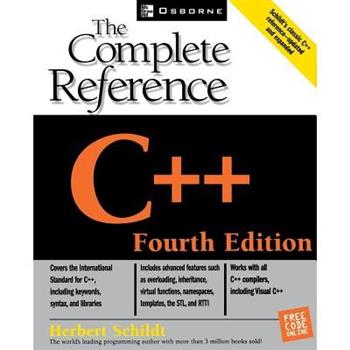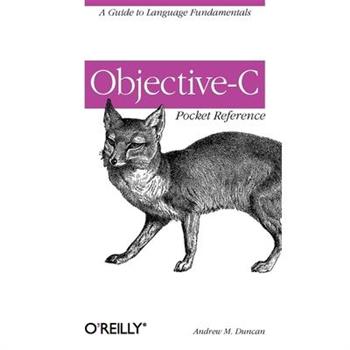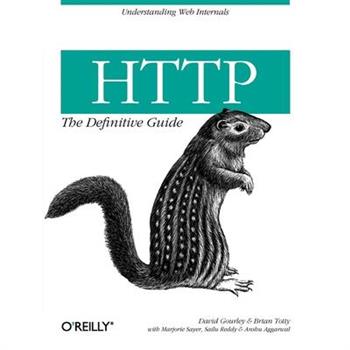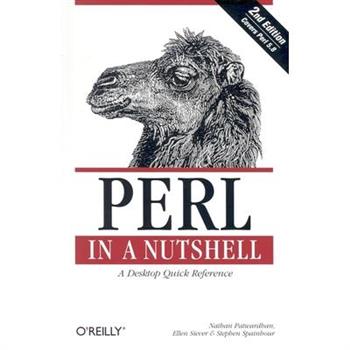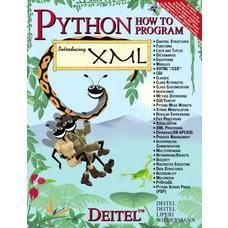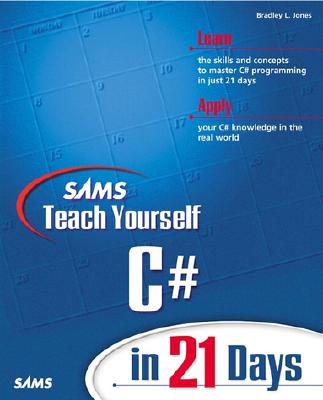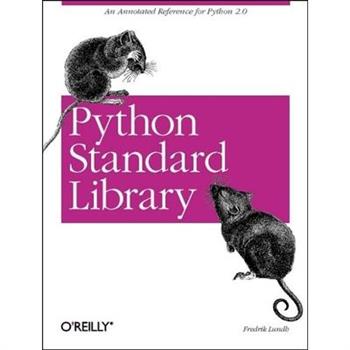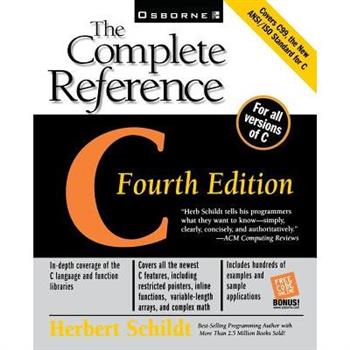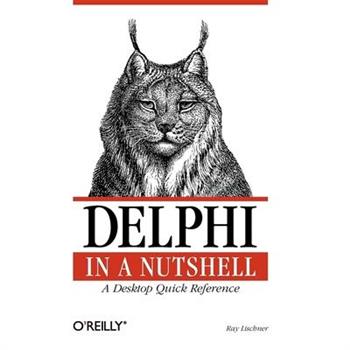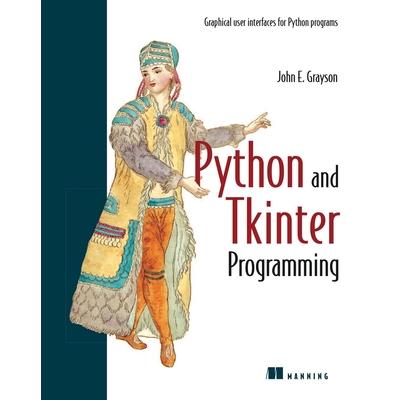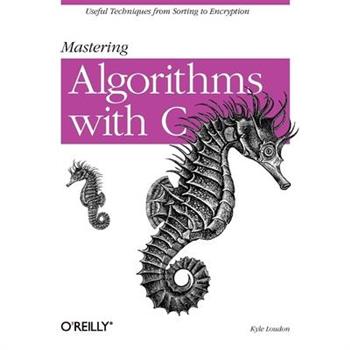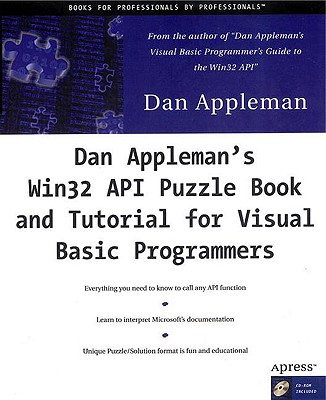Java 5.0 Tiger
Java 5.0, code-named "Tiger", promises to be the most significant new version of Java since the introduction of the language. With over a hundred substantial changes to the core language, as well as numerous library and API additions, developers have a variety of new features, facilities, and techniques available. But with so many changes, where do you start? You could read through the lengthy, often boring language specification; you could wait for the latest 500 page tome on concepts and theory; you could even play around with the new JDK, hoping you figure things out--or you can get straight to work with Java 5.0 Tiger: A Developer's Notebook. This no-nonsense, down-and-dirty guide by bestselling Java authors Brett McLaughlin and David Flanagan skips all the boring prose and lecture, and jumps right into Tiger. You'll have a handle on the important new features of the language by the end of the first chapter, and be neck-deep in code before you hit the halfway point. Using the task-oriented format of this new series, you'll get complete practical coverage of generics, learn how boxing and unboxing affects your type conversions, understand the power of varargs, learn how to write enumerated types and annotations, master Java's new formatting methods and the for/in loop, and even get a grip on concurrency in the JVM. Light on theory and long on practical application, Java 5.0 Tiger: A Developer's Notebook allows you to cut to the chase, getting straight to work with Tiger's new features. The new Developer's Notebooks series from O'Reilly covers important new tools for software developers. Emphasizing example over explanation and practice over theory, they focus on learning by doing--you'll get the goods straight from the masters, in an informal and code-intensive style that suits developers. If you've been curious about Tiger, but haven't known where to start, this no-fluff, lab-style guide is the solution.
Essential Actionscript 2.0
In September 2003, Macromedia released Flash MX 2004, and with it, ActionScript 2.0, a dramatically improved version of Flash's programming language. ActionScript 2.0 introduces a formal object-oriented programming syntax and methodology for creating Flash applications. From a developer's perspective, the new OOP-based techniques in ActionScript 2.0 make applications more natural to plan and conceptualize, more stable, more reusable across projects, easier to maintain, change, and expand upon, and much more. In short, they enhance the entire development process. In Essential ActionScript 2.0, bestselling author Colin Moock--one of the most universally respected developers in the Flash community--covers everything you'll need to know about the new ActionScript language and its methodologies for producing movies, animation, and applications on the web. Moock guides readers through this important new territory with his trademark easy-to-understand style and expertise. Moock's goal throughout the book is not just to get you to use object-oriented programming in your daily Flash work: he wants you to reap the benefits of OOP; he wants you to understand ActionScript 2.0 completely. And without question, Moock is the author who can make this happen. Essential ActionScript 2.0 begins with a tour of the language, including the fundamentals of object-oriented concepts, syntax, and usage. Those who are new to OOP will learn the basics and how to apply their understanding. Those who are familiar with OOP will leverage their prior experience to learn about Flash-based OOP. The next part of the book shows how to structure entire applications with ActionScript 2.0, teaching you best practices and techniques to build scalable, extensible, stable apps. Next, you'll explore a variety of approaches to various programming situations by applying object-oriented programming strategies, known as design patterns, to Flash. Experienced Flash developers and programmers coming from other languages will enjoy the sheer depth of Moocks's coverage and expertise in Essential ActionScript 2.0. Novice programmers will appreciate the frequent, low-jargon explanations that are often glossed over by advanced programming books. As usual, Moock guarantees quality and accuracy by working closely with Macromedia Flash engineers, including Rebecca Sun, lead developer of ActionScript 2.0. Whether you're ready to make the move to ActionScript 2.0 now or simply assessing it for the future, you'll find everything you need to know within this book. Essential ActionScript 2.0 is the one book every ActionScript coder must own.
Office 2003 XML
In Microsoft's Office 2003, users experience the merger of the power of the classic Office suite of applications with the fluidity of data exchange inherent in XML. With XML at its heart, the new version of Microsoft's desktop suite liberates the information stored in millions of documents created with Office software over the past fifteen years, making it available to a wide variety of programs. Office 2003 XML offers an in-depth exploration of the relationship between XML and Office 2003, examining how the various products in the Office suite both produce and consume XML. Developers will learn how they can connect Microsoft Office to others systems, while power users will learn to create and analyze XML documents using familiar Office tools. The book begins with an overview of the XML features included in the various Office 2003 components, and explores in detail how Word, Excel, and Access interact with XML. This book covers both the user interface side, creating interfaces so that users can comfortably (and even unknowingly) work with XML, and the back end, exposing Office information to other processes. It also looks at Microsoft's new InfoPath application and how it fits with the rest of Office. Finally, the book's appendices introduce various XML technologies that may be useful in working with Office, including XSLT, W3C XML Schema, RELAX NG, and SOAP. Office 2003 XML provides quick and clear guidance to a anyone who needs to import or export information from Office documents into other systems. Both XML programmers and Office power will learn how to get the most from this powerful new intersection between Office 2003 and XML.
Mastering Oracle SQL
The vast majority of Oracle SQL books discuss some syntax, provide the barest rudiments of using Oracle SQL, and perhaps include a few simple examples. It might be enough to pass a survey course, or give you some buzz words to drop in conversation with real Oracle DBAs. But if you use Oracle SQL on a regular basis, you want much more. You want to access the full power of SQL to write queries in an Oracle environment. You want a solid understanding of what's possible with Oracle SQL, creative techniques for writing effective and accurate queries, and the practical, hands-on information that leads to true mastery of the language. Simply put, you want useful, expert best practices that can be put to work immediately, not just non-vendor specific overview or theory. Updated to cover the latest version of Oracle, Oracle 10g, this edition of the highly regarded Mastering Oracle SQL has a stronger focus on technique and on Oracle's implementation of SQL than any other book on the market. It covers Oracle s vast library of built-in functions, the full range of Oracle SQL query-writing features, regular expression support, new aggregate and analytic functions, subqueries in the SELECT and WITH clauses, multiset union operators, enhanced support for hierarchical queries: leaf and loop detection, and the CONNECT_BY_ROOT operator, new partitioning methods (some introduced in Oracle9i Release 2), and the native XML datatype, XMLType. Mastering Oracle SQL, 2nd Edition fills the gap between the sometimes spotty vendor documentation, and other books on SQL that just don't explore the full depth of what is possible with Oracle-specific SQL. For those who want to harness the untapped (and often overlooked) power of Oracle SQL, this essential guide for putting Oracle SQL to work will prove invaluable.
Eclipse
Java programmers know how finicky Java can be to work with. An omitted semi-colon or the slightest typo will cause the Java command-line compiler to spew pages of annoying error messages across your screen. And it doesn't fix them--that's up to you: fix them, compile again, and hope that nothing goes wrong this time. Eclipse, the popular Java integrated development environment (IDE) provides an elegant and powerful remedy for this common, frustrating scenario. It doesn't just catch your errors before you compile, it also suggests solutions. All you need to do is point and click. And it's free--what could be better? Still, if you're like most programmers, mastering a new technology--no matter how productive it will make you in the long run--is going to take a chunk out of your productivity now. You want to get up to speed quickly without sacrificing efficiency. O'Reilly's new guide to the technology, Eclipse, provides exactly what you're looking for: a fast-track approach to mastery of Eclipse. This insightful, hands-on book delivers clear and concise coverage, with no fluff, that gets down to business immediately. The book is tightly focused, covering all aspects of Eclipse: the menus, preferences, views, perspectives, editors, team and debugging techniques, and how they're used every day by thousands of developers. Development of practical skills is emphasized with dozens of examples presented throughout the book. From cover-to-cover, the book is pure Eclipse, covering hundreds of techniques beginning with the most basic Java development through creating your own plug-in editors for the Eclipse environment. Some of the topics you'll learn about include: Using Eclipse to develop Java code Testing and debugging Working in teams using CVS Building Eclipse projects using Ant The Standard Widget Toolkit (SWT) Web development Developing Struts applications with Eclipse From basics to advanced topics, Eclipse takes you through the fundamentals of Eclipse and more. You may be an Eclipse novice when you pick up the book, but you'll be a pro by the time you've finished.
Vba and Macros for Microsoft Excel
Everyone is looking for ways to save money these days. That can be hard to do for businesses that have complex needs, such as custom software applications. However, VBA and Macros for Microsoft Excel can teach you ways to customize pre-existing software to meet your specific needs. A variety of topics are covered that are sure to give you a solid knowledge of the VBA language. Event programming, user forms, carts, pivot tables, multi-dimensional arrays and Web queries are just a few of the areas you will learn about in this book. Written by the principal behind the leading Excel Web site, www.mrexcel.com, this book is sure to save you time and money!
Web Database Applications With Php and Mysql
There are many reasons for serving up dynamic content from a web site: to offer an online shopping site, create customized information pages for users, or just manage a large volume of content through a database. Anyone with a modest knowledge of HTML and web site management can learn to create dynamic content through the PHP programming language and the MySQL database. This book gives you the background and tools to do the job safely and reliably. Web Database Applications with PHP and MySQL, Second Edition thoroughly reflects the needs of real-world applications. It goes into detail on such practical issues as validating input (do you know what a proper credit card number looks like?), logging in users, and using templates to give your dynamic web pages a standard look. But this book goes even further. It shows how JavaScript and PHP can be used in tandem to make a user's experience faster and more pleasant. It shows the correct way to handle errors in user input so that a site looks professional. It introduces the vast collection of powerful tools available in the PEAR repository and shows how to use some of the most popular tools. Even while it serves as an introduction to new programmers, the book does not omit critical tasks that web sites require. For instance, every site that allows updates must handle the possibility of multiple users accessing data at the same time. This book explains how to solve the problem in detail with locking. Through a sophisticated sample application--Hugh and Dave's Wine Store--all the important techniques of dynamic content are introduced. Good design is emphasized, such as dividing logic from presentation. The book introduces PHP 5 and MySQL 4.1 features, while providing techniques that can be used on older versions of the software that are still in widespread use. This new edition has been redesigned around the rich offerings of PEAR. Several of these, including the Template package and the database-independent query API, are fully integrated into examples and thoroughly described in the text. Topics include: Installation and configuration of Apache, MySQL, and PHP on Unix(R), Windows(R), and Mac OS(R) X systems Introductions to PHP, SQL, and MySQL administration Session management, including the use of a custom database for improved efficiency User input validation, security, and authentication The PEAR repository, plus details on the use of PEAR DB and Template classes Production of PDF reports
JavaServer Faces
JavaServer Faces, or JSF, brings a component-based model to web application development that's similar to the model that's been used in standalone GUI applications for years. The technology builds on the experience gained from Java Servlets, JavaServer Pages, and numerous commercial and open source web application frameworks that simplify the development process. In JavaServer Faces, developers learn how to use this new framework to build real-world web applications. The book contains everything you'll need: how to construct the HTML on the front end; how to create the user interface components that connect the front end to your business objects; how to write a back-end that's JSF-friendly; and how to create the deployment descriptors that tie everything together. JavaServer Faces pays particular attention to simple tasks that are easily ignored, but crucial to any real application: working with tablular data, for example, or enabling and disabling buttons. And this book doesn't hide from the trickier issues, like creating custom components or creating renderers for different presentation layers. Whether you're experienced with JSF or a just starting out, you'll find everything you need to know about this technology in this book. Topics covered include: The JSF environment Creating and rendering components Validating input Handling user-generated events Controlling page navigation Working with tabular data Internationalization Integration between JSF and Struts Developing custom renderers and custom components JavaServer Faces is a complete guide to the crucial new JSF technology. If you develop web applications, JSF belongs in your toolkit, and this book belongs in your library.
C++ Demystified
Publisher's Note: Products purchased from Third Party sellers are not guaranteed by the publisher for quality, authenticity, or access to any online entitlements included with the product.Minimal technical jargon, step-by-step discussions, and quizzes at the end of each chapter make this an easy-to-understand guide to C++ programming. Quickly learn what a programming language is and the anatomy of C++, then jump right into creating your own programs with expert guidance. Discover functions, objects, compilers, linkers, and much more along the way. For the fast and easy way to understanding the fundamentals of C++, this is the resource you need.
Beginning Xslt
This book introduces Web developers and people with limited programming experience to the exciting world of "Extensible Stylesheet Language Transformations" (XSLT). XSLT is vital to realizing the promise of XML. If you, for example, have an XML document and you want to use the same document to appear both on the Web and in a printed document, you would need to use XSLT to transform the raw XML into the two forms.
Perl Template Toolkit
Among the many different approaches to "templating" with Perl--such as Embperl, Mason, HTML:: Template, and hundreds of other lesser known systems--the Template Toolkit is widely recognized as one of the most versatile. Like other templating systems, the Template Toolkit allows programmers to embed Perl code and custom macros into HTML documents in order to create customized documents on the fly. But unlike the others, the Template Toolkit is as facile at producing HTML as it is at producing XML, PDF, or any other output format. And because it has its own simple templating language, templates can be written and edited by people who don't know Perl. In short, the Template Toolkit combines the best features of its competitors, with ease-of-use and flexibility, resulting in a technology that's fast, powerful and extensible, and ideally suited to the production and maintenance of web content and other dynamic document systems. In Perl Template Toolkit you'll find detailed coverage of this increasingly popular technology. Written by core members of the technology's development team, the book guides you through the entire process of installing, configuring, using, and extending the Template Toolkit. It begins with a fast-paced but thorough tutorial on building web content with the Template Toolkit, and then walks you through generating and using data files, particularly with XML. It also provides detailed information on the Template Toolkit's modules, libraries, and tools in addition to a complete reference manual. Topics in the book include: Getting started with the template toolkit The Template language Template directives Filters Plugins Extending the Template Toolkit Accessing databases XML Advanced static web page techniques Dynamic web content and web applications The only book to cover this important tool, Perl Template Toolkit is essential reading for any Perl programmer who wants to create dynamic web content that is remarkably easy to maintain. This book is your surefire guide to implementing this fast, flexible, and powerful templating system.
Advanced Java Game Programming
* Teaches the latest Java game programming techniques with detailed code examples. * First to market with the publication of a high-performance Swing- based sprite animation engine. * Covers deployment frameworks, accelerated graphics, game architecture, multiplayer networking, and artificial intelligence.
Pro Jmx
* This book looks at JMX from the perspective of an applications developer, rather than a manager. * Cover the latest releases including JMX 1.1 and JMX 1.2 (when released). JMX 1.2 will also become a part of the full J2EE 1.4 release later in 2003. * It digs deep into the JMX 1.5/JMX Remoting 1.2 capabilities * It takes JMX out of the management domain and introduces it to the distributed applications domain and the service-oriented architecture domain. * Offers advanced content about Monitors, Notifications, Dynamic Class Loading and MLets, Using Dynamic Proxies with Dynamic MBeans, MBean Inheritance. * Addresses distributed service levels
Java Examples in a Nutshell
The author of the best-selling Java in a Nutshell has created an entire book of real-world Java programming examples that you can learn from. If you learn best "by example," this is the book for you. This third edition covers Java 1.4 and contains 193 complete, practical examples: over 21,900 lines of densely commented, professionally written Java code, covering 20 distinct client-side and server-side APIs. It includes new chapters on the Java Sound API and the New I/O API. The chapters on XML and servlets have been rewritten to cover the latest versions of the specifications and to demonstrate best practices for Java 1.4. New and updated examples throughout the book demonstrate many other new Java features and APIs. Java Examples in a Nutshell is a companion volume to Java in a Nutshell, Java Foundation Classes in a Nutshell, and Java Enterprise in a Nutshell. It picks up where those quick references leave off, providing a wealth of examples for both novices and experts. This book doesn't hold your hand; it simply delivers well-commented working examples with succinct explanations to help you learn and explore Java and its APIs. Java Examples in a Nutshell contains examples that demonstrate: Core APIs, including I/O, New I/O, threads, networking, security, serialization, and reflection Desktop APIs, highlighting Swing GUIs, Java 2D graphics, preferences, printing, drag-and-drop, JavaBeans, applets, and sound Enterprise APIs, including JDBC (database access), JAXP (XML parsing and transformation), Servlets 2.4, JSP 2.0 (JavaServer Pages), and RMI The book begins with introductory examples demonstrating structured and object-oriented programming techniques for new Java programmers. A special index at the end of the book makes it easy to look up examples that use a particular Java class or accomplish a desired task. In between, each chapter includes exercises that challenge readers and suggest further avenues for exploration.
Practical Programming in Tcl and Tk
Practical Programming in Tcl/Tk is described as the "bible" for Tcl programmers. It is a guide to the Tcl/Tk programming language and GUI toolkit. This revision includes substantial updates to cover the new version 8.4-giving both an overview of the features, as well as details about every command in the language. The third edition, written on version 8.2, sold over 30,000 copies. Version 8.4 of Tcl - Tool Command Language-provides substantial updates to one of the most popular UNIX scripting languages. The latest release, includes the addition of a virtual filesystem (VFS), many additional programming widgets (spinbox, panedwindow, labelframe), and improved performance of about 20% over 8.3. The book provides a guide to the best ways to use the tooklit. It not only gives accurate details, but includes extensive examples that demonstrate the best way to use the toolkit. The authors are experts that have both developed the technology and used it to solve problems, so they have many valuable insights to relate to the readers.
How to do Everything with JavaScript
Publisher's Note: Products purchased from Third Party sellers are not guaranteed by the publisher for quality, authenticity, or access to any online entitlements included with the product.This friendly, solutions-oriented guide is filled with step-by-step examples that illustrate how to write basic to advanced JavaScript applications, as well as modify existing scripts to suit individual needs. Each chapter begins with the specific how-to topics that will be covered. Within the chapter, each topic is accompanied by a solid, easy-to-follow walkthrough of the process.
Swing
This book builds on the successful approach of the first edition of Swing, once again taking the power and flexibility of Java's Swing library to its limits. Using a fast-paced style, it starts by introducing each of the Swing components and continues with production-quality code examples in which Swing features are customized, combined, and vigorously exercised to demonstrate real-world usage. With over 400 pages of revised text, additional examples, and new material to bring the book up to date with J2SE 1.4, Swing 2nd edition includes complete coverage of the new JSpinner and JFormattedTextField components, the new Focus and Keyboard architectures, and many other new and enhanced Swing features. Three new chapters have also been added to cover the construction of HTML and XML editor applications, and how to work with the new Drag & Drop architecture.
Practical C++ Programming
C++ is a powerful, highly flexible, and adaptable programming language that allows software engineers to organize and process information quickly and effectively. But this high-level language is relatively difficult to master, even if you already know the C programming language. The 2nd edition of Practical C++ Programming is a complete introduction to the C++ language for programmers who are learning C++. Reflecting the latest changes to the C++ standard, this 2nd edition takes a useful down-to-earth approach, placing a strong emphasis on how to design clean, elegant code. In short, to-the-point chapters, all aspects of programming are covered including style, software engineering, programming design, object-oriented design, and debugging. It also covers common mistakes and how to find (and avoid) them. End of chapter exercises help you ensure you've mastered the material. Practical C++ Programming thoroughly covers: C++ Syntax Coding standards and style Creation and use of object classes Templates Debugging and optimization Use of the C++ preprocessor File input/output Steve Oualline's clear, easy-going writing style and hands-on approach to learning make Practical C++ Programming a nearly painless way to master this complex but powerful programming language.
C++: The Complete Reference, 4th Edition
Publisher's Note: Products purchased from Third Party sellers are not guaranteed by the publisher for quality, authenticity, or access to any online entitlements included with the product.Best-selling genius Herb Schildt covers everything from keywords, syntax, and libraries, to advanced features such as overloading, inheritance, virtual functions, namespaces, templates, and RTTI--plus, a complete description of the Standard Template Library (STL).
Objective-C Pocket Reference
Objective-C is an exciting and dynamic approach to C-based object-oriented programming; it's the approach adopted by Apple as the foundation for programming under Mac OS X, a Unix-based operating system gaining wide acceptance among programmers and other technologists. Objective-C is easy to learn and has a simple elegance that is a welcome breath of fresh air after the abstruse and confusing C++. To help you master the fundamentals of this language, you'll want to keep the Objective-C Pocket Reference close at hand. This small book contains a wealth of valuable information to speed you over the learning curve. In this pocket reference, author Andrew Duncan provides a quick and concise introduction to Objective-C for the experienced programmer. In addition to covering the essentials of Objective-C syntax, Andrew also covers important faces of the language such as memory management, the Objective-C runtime, dynamic loading, distributed objects, and exception handling. O'Reilly's Pocket References have become a favorite among programmers everywhere. By providing important details in a succinct, well-organized format, these handy books deliver just what you need to complete the task at hand. When you've reached a sticking point in your work and need to get to a solution quickly, the new Objective-C Pocket Reference is the book you'll want to have.
Bug Patterns in Java
Bug Patterns in Java presents a methodology for diagnosing and debugging computer programs. The act of debugging will be presented as an ideal application of the scientific method. Skill in this area is entirely independent of other programming skills, such as designing for extensibility and reuse. Nevertheless, it is seldom taught explicitly. Eric Allen lays out a theory of debugging, and how it relates to the rest of the development cycle. In particular, he stresses the critical role of unit testing in effective debugging. At the same time, he argues that testing and debugging, while often conflated, are properly considered to be distinct tasks. Upon laying this groundwork, Allen then discusses various "bug patterns" (recurring relationships between signaled errors and underlying bugs in a program) that occur frequently in computer programs. For each pattern, the book discusses how to identify them, how to treat them, and how to prevent them.
Writing Perl Modules for Cpan
Perl is a general-purpose programming language with over one million users. It has become the language of choice for Web development, text processing, Internet services, mail filtering, graphical programming, systems administration, and every other task requiring portable and easily developed solutions. Sam Tregar tells programmers how best to use and contribute modules to the Open Source repository known as CPAN (Comprehensive Perl Archive Network).
Http
Behind every web transaction lies the Hypertext Transfer Protocol (HTTP) --- the language of web browsers and servers, of portals and search engines, of e-commerce and web services. Understanding HTTP is essential for practically all web-based programming, design, analysis, and administration. While the basics of HTTP are elegantly simple, the protocol's advanced features are notoriously confusing, because they knit together complex technologies and terminology from many disciplines. This book clearly explains HTTP and these interrelated core technologies, in twenty-one logically organized chapters, backed up by hundreds of detailed illustrations and examples, and convenient reference appendices. HTTP: The Definitive Guide explains everything people need to use HTTP efficiently -- including the "black arts" and "tricks of the trade" -- in a concise and readable manner. In addition to explaining the basic HTTP features, syntax and guidelines, this book clarifies related, but often misunderstood topics, such as: TCP connection management, web proxy and cache architectures, web robots and robots.txt files, Basic and Digest authentication, secure HTTP transactions, entity body processing, internationalized content, and traffic redirection. Many technical professionals will benefit from this book. Internet architects and developers who need to design and develop software, IT professionals who need to understand Internet architectural components and interactions, multimedia designers who need to publish and host multimedia, performance engineers who need to optimize web performance, technical marketing professionals who need a clear picture of core web architectures and protocols, as well as untold numbers of students and hobbyists will all benefit from the knowledge packed in this volume. There are many books that explain how to use the Web, but this is the one that explains how the Web works. Written by experts with years of design and implementation experience, this book is the definitive technical bible that describes the "why" and the "how" of HTTP and web core technologies. HTTP: The Definitive Guide is an essential reference that no technically-inclined member of the Internet community should be without.
Essential Php Fast
A quick, practical introduction to PHP and the MySQL database
Xml Schema
If you need to create or use formal descriptions of XML vocabularies, the W3C's XML Schema offers a powerful set of tools for defining acceptable document structures and content. An alternative to DTDs as the way to describe and validate data in an XML environment, XML Schema enables developers to create precise descriptions with a richer set of datatypes?such as booleans, numbers, currencies, dates and times?that are essential for today's applications. Schemas are powerful, but that power comes with substantial complexity. This concise book explains the ins and outs of XML Schema, including design choices, best practices, and limitations. Particularly valuable are discussions of how the type structures fit with existing database and object-oriented program contexts. With XML Schema, you can define acceptable content models and annotate those models with additional type information, making them more readily bound to programs and objects. Schemas combine the easy interchange of text-based XML with the more stringent requirements of data exchange, and make it easier to validate documents based on namespaces. You?ll find plenty of examples in this book that demonstrate the details necessary for precise vocabulary definitions. Topics include: Foundations of XML Schema syntax Flat, "russian-doll", and other schema approaches Working with simple and complex types in a variety of contexts The built-in datatypes provided by XML Schema Using facets to extend datatypes, including regular expression-based patterns Using keys and uniqueness rules to limit how and where information may appear Creating extensible schemas and managing extensibility Documenting schemas and extending XML Schema capabilities through annotations In addition to the explanatory content, XML Schemaprovides a complete reference to all parts of both the XML Schema Structures and XML Schema Datatypes specifications, as well as a glossary. Appendices explore the relationships between XML Schema and other tools for describing document structures, including DTDs, RELAX NG, and Schematron, as well as work in progress at the W3C to more tightly integrate XML Schema with existing specifications. No matter how you intend to use XML Schema - for data structures or document structures, for standalone documents or part of SOAP transactions, for documentation, validation, or data binding ? all the foundations you need are outlined in XML Schema.
Perl in a Nutshell
This complete guide to the Perl programming language ranges widely through the Perl programmer's universe, gathering together in a convenient form a wealth of information about Perl itself and its application to CGI scripts, XML processing, network programming, database interaction, and graphical user interfaces. The book is an ideal reference for experienced Perl programmers and beginners alike.With more than a million dedicated programmers, Perl is proving to be the best language for the latest trends in computing and business, including network programming and the ability to create and manage web sites. It's a language that every Unix system administrator and serious web developer needs to know. In the past few years, Perl has found its way into complex web applications of multinational banks, the U.S. Federal Reserve, and hundreds of large corporations.In this second edition, Perl in a Nutshell has been expanded to include coverage of Perl 5.8, with information on Unicode processing in Perl, new functions and modules that have been added to the core language, and up-to-date details on running Perl on the Win32 platform. The book also covers Perl modules for recent technologies such as XML and SOAP.Here are just some of the topics contained in this book: Basic Perl referenceQuick reference to built-in functions and standard modulesCGI.pm and mod_perlXML:: * modulesDBI, the database-independent API for PerlSockets programmingLWP, the library for Web programming in PerlNetwork programming with the Net modulesPerl/Tk, the Tk extension to Perl for graphical interfacesModules for interfacing with Win32 systemsAs part of the successful "in a Nutshell" book series from O'Reilly & Associates, Perl in a Nutshell is for readers who want a single reference for all their needs."In a nutshell, Perl is designed to make the easy jobs easy, without making the hard jobs impossible."-- Larry Wall, creator of Perl
Sams Teach Yourself Perl in 21 Days
Sams Teach Yourself Perl in 21 Days covers the basics of Perl in the first few chapters, and then moves on to practical issues of Perl and in-depth discussions of more advanced topics. Later chapters also delve into software engineering topics, with discussions of modular code and object-oriented programming. CGI is covered in one chapter, but it is not the focus on the book. The book relies heavily on longer working examples and code, as opposed to small snippets and code fragments, and each chapter includes two to three smaller complete examples and one major one that illustrates most of the concepts for that chapter and builds on the chapters before it. Written by Laura Lemay, this is her third major book after Sams Teach Yourself Web Publishing with HTML in 21 Days and Sams Teach Yourself Java in 21 Days.
Database Programming With C#
- Step-by-step coverage of everything you ever wanted to know about ADO .NET - Covers relational databases, Active Directory (LDAP) access, Message Queuing, and server-side processing (stored procedures, views, and triggers) - Discusses what all developers need to get started with data access in C#
C
This authoritative reference manual provides a complete description of the C language, the run-time libraries, and a style of C programming that emphasizes correctness, portability, and maintainability. The authors describe the C language more clearly and in more detail than in any other book.
Designing With Javascript
JavaScript is one of the core technologies of the Web. Using JavaScript, you can create dynamic, interactive web pages that include image rollovers, pop-up windows, auto-scrolling frames, intelligent forms, and sophisticated Dynamic HTML effects. Even better, you don't have to be a programming ace to learn enough JavaScript to incorporate these elements into your web pages.Designing with JavaScript shows you how to create the effects you want, without forcing you to wade through pages of dry programmer-speak about variables, operators, and functions. Each chapter demonstrates common JavaScript techniques and explains how to customize them for your own use. Along the way, it introduces basic JavaScript concepts, teaching the language in the context of real-world examples. By the time you finish this book, you'll have a solid foundation of JavaScript knowledge that you can apply to your own web pages.With Designing with JavaScript, you will learn to: Use JavaScript to produce visual effects, such as image rollovers and rotating billboardsLaunch new browser windows, control frames, and validate form dataCustomize your site by using JavaScript to detect browsers, platforms, and plug-insUse cookies to keep track of visitors, so you can welcome new users while offering customized pages to returning usersCreate a tabbed folder interface, drop-down menus, and a scrolling headline ticker, using the basics of Dynamic HTMLThe first edition of Designing with JavaScript taught tens of thousands of web designers how to enliven their pages with JavaScript. This new edition has been updated to cover the latest JavaScript techniques supported by current web browsers. If you are ready to start incorporating JavaScript into your designs, this is the book for you.
Sams Teach Yourself C# in 21 Days
This complete guide covers topics from basic program construction to intermediate level application engineering. Following the 21 Days formula, this book is a three-week intensive course for the beginning programmer who wishes to get started with this exiting new coding standard. The comprehensive lesson plan will enable the reader to understand, design and build applications that are compatible with the new Microsoft(R) .NET framework. Topics covered include object oriented programming, fundamentals, compiling your code, inheritance, polymorphism, namespaces, .NET base classes, garbage collection, exceptions, debugging, and XML.
Python Standard Library
Python Standard Library is an essential guide for serious Python programmers. Python is a modular language that imports most useful operations from the standard library (basic support modules; operating system interfaces; network protocols; file formats; data conversions; threads and processes; and data storage). You can't really program in Python without using it. In this book, author Fredrik Lundh, creator of the Python Imaging Library (PIL), delivers tested, accurate documentation of all the modules in the Python Standard Library, along with over 300 annotated example scripts using the modules.Python Standard Library renders this valuable information in a clean, easy-to-read format, yet doesn't talk down to readers. This accurate and complete reference documentation is for the Python programmer who wants the facts and little else.The book is based on the author's work with the Python newsgroup: he reviewed more than 2500 questions and answers to that newsgroup in order to make sure the book covered what Python users really wanted to know. An earlier version of this book has been available electronically for over a year, so the material has been tested by Python programmers in real-life applications.This version of Python Standard Library covers all the new modules and related information for Python 2.0, the first new major release of Python in four years.
Vbscript Pocket Reference
Microsoft's Visual Basic Scripting Edition (VBScript), a subset of Visual Basic for Applications, is a powerful language for Internet application development, where it can serve as a scripting language for server-side, client-side, and system scripting. Whether you're developing code for Active Server Pages, client-side scripts for Internet Explorer, code for Outlook forms, or scripts for Windows Script Host, VBScript Pocket Reference will be your constant companion. Don't let the pocket-friendly format fool you. Based on the bestselling VBScript in a Nutshell, this small book details every VBScript language element--every statement, function, and object--both in VBScript itself, and in the Microsoft Scripting Runtime Library. There's a special emphasis on the following details: The syntax, using standard code conventions The arguments accepted by the function or procedure, if any exist Entries are arranged alphabetically by topic, so that you can, for instance, easily find details about that string-handling function that you can't quite remember. In addition, appendixes list VBScript operators and VBScript intrinsic constants. Regardless of how much VBScript programming experience you have, the VBScript Pocket Reference is the book you'll pick up time and time again as your standard quick reference guide to the VBScript language. It is indispensable for anyone writing scripts with VBScript.
C++ for Vb Programmers
C++ is the skill most sought after by Visual Basic Programmers. According to Microsoft, there are over 3 million active Visual Basic programmers in the world today. Morrison teaches VB programmers to program in C++ by making use of their own knowledge to make the transition as easily as possible. It is the only book to take this unique approach. This book is based on the author's own experience oflearning C++ as a VB programmer. Includes the stater edition of Visual C++.
C: The Complete Reference
Publisher's Note: Products purchased from Third Party sellers are not guaranteed by the publisher for quality, authenticity, or access to any online entitlements included with the product.Whether you are a beginning C programmer or a seasoned pro, the answers to all your C questions can be found in this one-stop resourceAnother gem from Herb Schildt--best-selling programming author with more than 2.5 million books sold! C: The Complete Reference, Fourth Edition gives you full details on C99, the New ANSI/ISO Standard for C. You'll get in-depth coverage of the C language and function libraries as well as all the newest C features, including restricted pointers, inline functions, variable-length arrays, and complex math. This jam-packed resource includes hundreds of examples and sample applications.
Schaum's Outline of Programming with C++
Tough Test Questions? Missed Lectures? Not Enough Time?Fortunately for you, there's Schaum's Outlines. More than 40 million students have trusted Schaum's to help them succeed in the classroom and on exams. Schaum's is the key to faster learning and higher grades in every subject. Each Outline presents all the essential course information in an easy-to-follow, topic-by-topic format. You also get hundreds of examples, solved problems, and practice exercises to test your skills. This Schaum's Outline gives youPractice problems with full explanations that reinforce knowledgeCoverage of the most up-to-date developments in your course fieldIn-depth review of practices and applicationsFully compatible with your classroom text, Schaum's highlights all the important facts you need to know. Use Schaum's to shorten your study time-and get your best test scores!Schaum's Outlines-Problem Solved.
Delphi in a Nutshell
With a new name and a new focus on CORBA, database drivers, and Microsoft Back Office applications, Inprise/Borland Delphi is enjoying a resurgence, with a growing user base of programmers who use Delphi for rapid development of enterprise computing applications. Not to rest on success, the latest version of Delphi, Version 5, includes further expansion and refinement of the 3-tier application framework introduced in Delphi 4 and has resulted in a prize-winning product. Delphi in a Nutshell is the first concise reference to Borland/Inprise Delphi available. It succinctly collects all the information you need in one easy-to-use, complete, and accurate volume that goes beyond the product documentation itself. Delphi in a Nutshell starts with the Delphi object model and how to use RTTI (Run Time Type Information) for efficient programming. The rest of the book is the most complete Delphi Pascal language reference available in print, detailing every language element with complete syntax, examples, and methods for use. The book concludes with a look at the compiler, discussing compiler directives in depth.
Python and Tkinter Programming
This book includes full documentation for Tkinter, and also offers extensive examples for many real-world Python/Tkinter applications that will give programmers a quick start on their own projects.
Mastering Algorithms With C
There are many books on data structures and algorithms, including some with useful libraries of C functions. Mastering Algorithms with C offers you a unique combination of theoretical background and working code. With robust solutions for everyday programming tasks, this book avoids the abstract style of most classic data structures and algorithms texts, but still provides all of the information you need to understand the purpose and use of common programming techniques. Implementations, as well as interesting, real-world examples of each data structure and algorithm, are included. Using both a programming style and a writing style that are exceptionally clean, Kyle Loudon shows you how to use such essential data structures as lists, stacks, queues, sets, trees, heaps, priority queues, and graphs. He explains how to use algorithms for sorting, searching, numerical analysis, data compression, data encryption, common graph problems, and computational geometry. And he describes the relative efficiency of all implementations. The compression and encryption chapters not only give you working code for reasonably efficient solutions, they offer explanations of concepts in an approachable manner for people who never have had the time or expertise to study them in depth. Anyone with a basic understanding of the C language can use this book. In order to provide maintainable and extendible code, an extra level of abstraction (such as pointers to functions) is used in examples where appropriate. Understanding that these techniques may be unfamiliar to some programmers, Loudon explains them clearly in the introductory chapters. Contents include: Pointers Recursion Analysis of algorithms Data structures (lists, stacks, queues, sets, hash tables, trees, heaps, priority queues, graphs) Sorting and searching Numerical methods Data compression Data encryption Graph algorithms Geometric algorithms
Java 2d Graphics
One weakness of Java has been its graphics capabilities. Java 1.0 and 1.1 only included simple primitives for line drawing: lines could only be one pixel wide, they could only be solid, and there wasn't any good way to draw curves. Font management and color management were also weak. Java 2D (collectively called the "2D API") signals a major improvement in Java's graphics capabilities. It covers many of the classes in Java 1.2 that address graphics handling and improves on many weaknesses that were present in the previous versions of Java.The 2D API allows you to produce high-quality, professional images on a screen or printer. Java 2D Graphics describes the 2D API from top to bottom, demonstrating how to set line styles and pattern fills as well as more advanced techniques of image processing and font handling. You'll see how to create and manipulate the three types of graphics objects: shapes, text, and images. Other topics include image data storage, color management, font glyphs, and printing.Java 2D Graphics assumes no prior knowledge of graphics. Chock full of detailed explanations and examples, this book provides beginning Java programmers with a solid foundation in 2D graphics and helps more advanced programmers create and use high-quality images in their applications.Topics covered in the book include: The rendering pipelineShapes and pathsGeometryPainting with solid colors, gradients, and texturesStroking paths, including dashed linesTransformations: translation, rotation, shearing, and scalingAlpha compositingClippingRasterizing and antialiasingFonts and textFont metricsGlyphsColors and color spacessRGB and CIEXYZICC color profilesImages, image color models, and image dataImage processingImage data storageGraphics devicesPrinting
Dan Appleman’s Win32 Api Puzzle Book and Tutorial for Visual Basic Programmers
Market: Readers who purchased Dan's Visual Basic Programmer's Guide to the Win32 API (over 70,000 copies sold) The estimated 200,000 hard core VB programmers who want to squeeze every ounce from Visual Basic. Some Good Quotes About Dan's Books: "Bottom line: If you need to extend VB beyond its core functionality, this is a book you'll want within arm's reach at all times"




